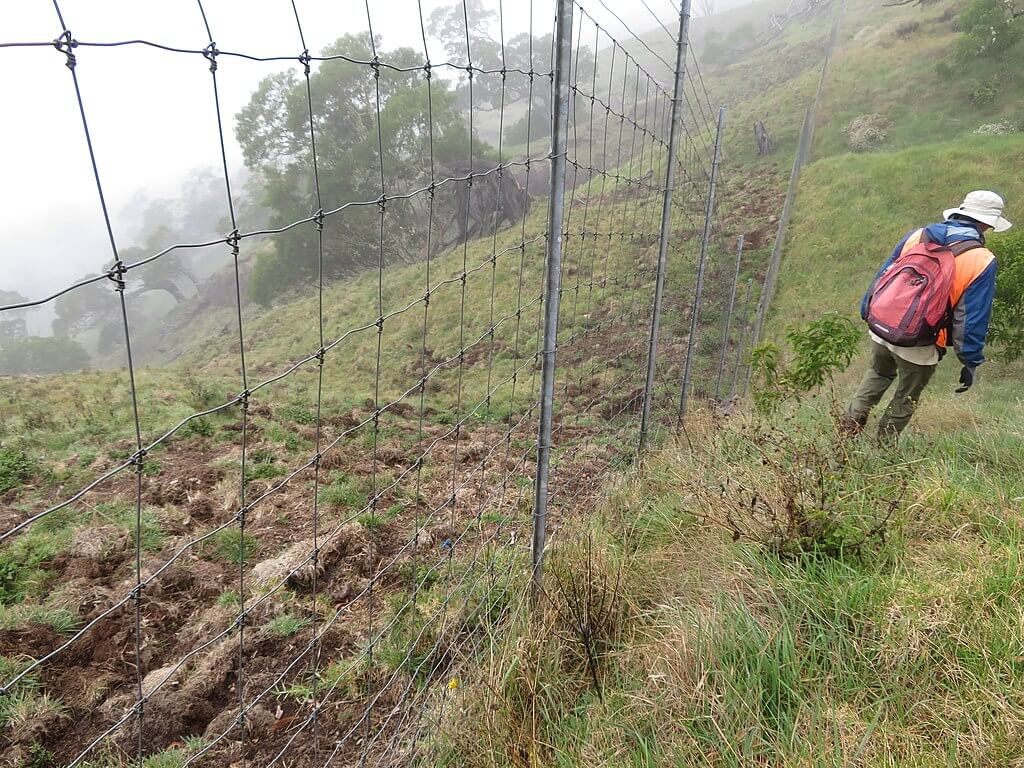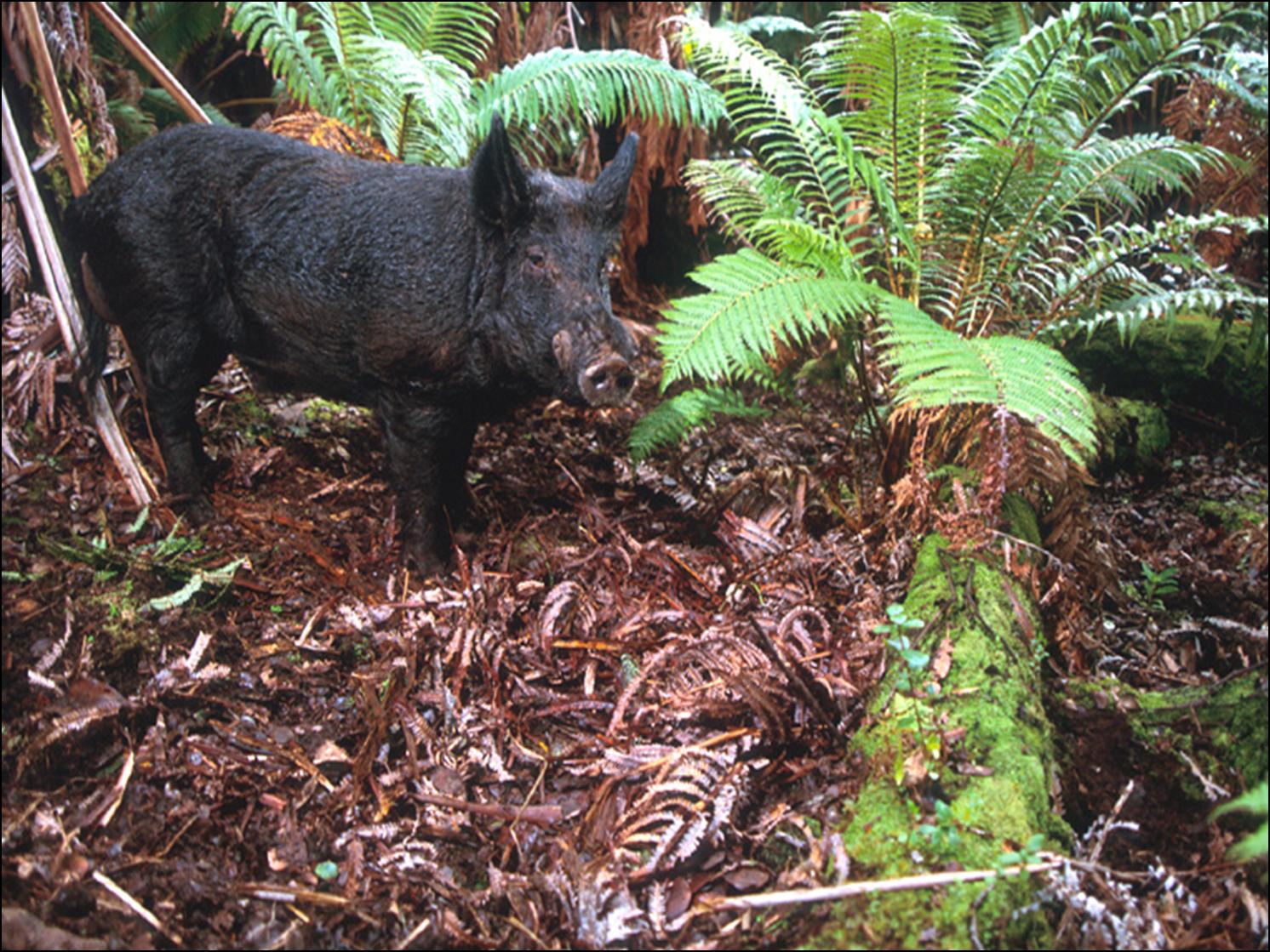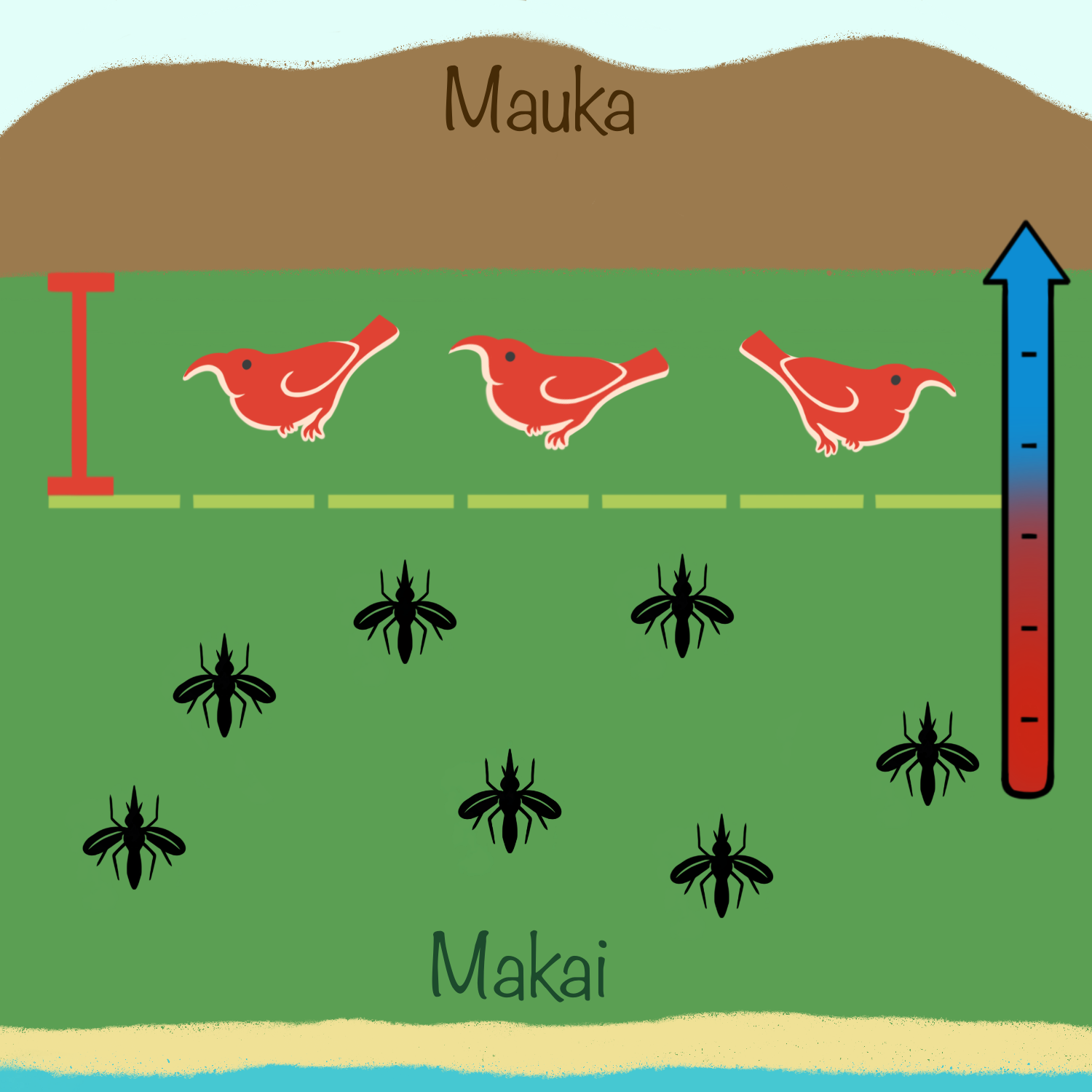
Feral Pigs
Feral pigs (Sus scrofa) are the offspring of domesticated pigs that were released into the wild. Prolific breeders, they are one of the most destructive invasive species in Hawaii and considered one of the 100 worst invasive species in the world according to the International Union for the Conservation of Nature (IUCN). Pigs wreak havoc in numerous ways in Hawaii’s fragile ecosystem, damaging and uprooting native plants, creating furrows that disease-carrying mosquitoes use to breed, and spreading invasive plants seeds. They are also a serious pest of agriculture in Hawaii, uprooting plantings, damaging forestry seedlings, and harboring animal diseases that can jump to cattle, like bovine tuberculosis.
Early Polynesians brought Polynesian pigs (pua’a) with them via canoe (wa’a), but pigs were kept close to home in enclosed areas as they served as an important food source. In the 1700s, Captain Cook introduced larger European boars and several other ungulates (hooved animals) to Hawaii for food and for sport. Once the pigs escaped or were let loose from containment, they began to thrive in the Hawaiian environment which had not adapted to any mammalian herbivores or predators. Today, pigs continue to be a nuisance reported by many in the islands, and pig hunting in Hawaii is legal with no bag limits, no restrictions on size, and a year-long season to encourage residents to help control this invasive pest.
How do feral pigs affect the landscape of Hawaii Island?
Pigs are opportunistic breeders, meaning they can breed all year round if the conditions are favorable. It only takes them 10-12 months to reach maturity, leading to hundreds and hundreds of hungry pigs with no large predator to keep them in check. Lots of Hawaii’s native plants evolved without needing to defend against any large herbivores, so over time they lost their thorns or toxins, making them an easy snack for hungry ungulates like pigs. The furrowing behavior to search for earthworms uproots keiki plants, and with less vegetation to hold soil, erosion of precious top soil by rain and wind occurs.
Pigs are also suspected as a contributor to the spread of Rapid Ohi’a Death. Like many other feral ungulates, they rub against the trees and dig around the roots, causing wounds to the bark of the tree. The fungal spores can enter the tree’s vascular system from these wounds. Recently published studies have found that ROD is much lower in fenced portions of forests where pigs are excluded when compared to adjacent unfenced areas.
Because of this destructive behaviour some of Hawaii’s forest reserves have to be enclosed by a fence to keep out feral ungulates like pigs and goats. The native forests are an important part of our watershed. No healthy forests = no water! Additionally, pigs can cause serious damage to agriculture production. They are also considered a pest in urban and residential areas, endangering drivers and tearing up landscaped yards.

Picture by Forest and Kim Starr

Picture by: Hawaii Volcano’s National Park
Pigs vs Birds
Not just the premise for a popular video game: feral pigs have had devastating impacts on Hawaii’s native birds. They don’t actually harm the birds directly, but they set the stage for something more deadly – fatal diseases borne by mosquitoes.
Pigs knock over hapu’u, tear up groundcover, and create wallows, lots of places where standing water can collect and allow mosquitoes to breed. These insects carry avian malaria and avian pox, diseases introduced to Hawai’i after Western contact, to which our native birds had never been exposed and so had never developed resistance. More than two-thirds of Hawaii’s native forest songbirds have gone extinct due to the combination of introduced diseases and mammalian predators like rats and cats. Almost no resident of Hawaii regularly enjoys the sight of native Hawaiian birds, because most endemic birds are now only found at high elevation where it is too cold for mosquitoes to live. But with rising temperatures the mosquito line is rising, leaving native birds with less space to live.

Pig Management
Pigs are well established in Hawaii and will never be eradicated, but control of the population is still essential to protect our natural resources. Although fencing is expensive, it is one of the most secure deterrents to pig damage on your property. Additionally, there are a number of hunters on the island who will offer their services to help you remove problem pigs. The list below was made available through DLNR DOFAW in Hilo, with pig hunters voluntarily agreeing to share their contact information for interested residents. Please understand that trapping and hunting of pigs is not an easy or inexpensive endeavor, and expect to fairly compensate any private parties who agree to assist you with pig removal.
*PLEASE NOTE* These contacts have not been vetted by DOFAW or BIISC and are not endorsed or recommended in any way. You should perform due diligence before selecting a contractor to work for you. Some suggested questions you should ask before working with a contractor:
- How much do you charge?
- What method do you use? (Trapping, snare, other?)
- How often will you check for pigs?
- What happens after the pig is caught?
- What considerations are there for keeping my pets safe?
